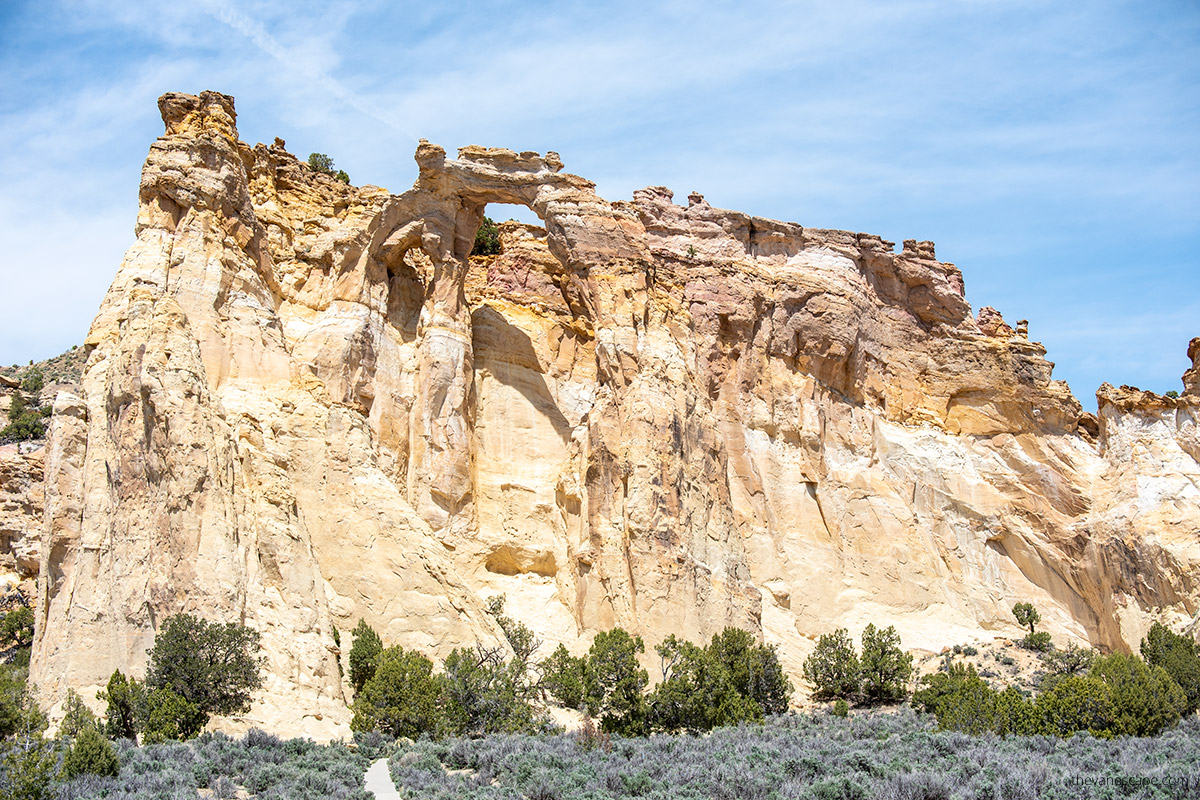Driving to Grosvenor Arch, Utah
Utah’s landscape is a canvas painted with majestic arches, each one a testament to the artistry of nature. While many travelers flock to the well-known Arches National Park, a hidden gem deserves a spot on every adventurer’s itinerary: Grosvenor Arch. This double arch, standing tall and proud in the Grand Staircase-Escalante National Monument, is a marvel that captures the imagination. Join us as we recount our recent journey to this extraordinary formation, sharing our experiences, tips, and insights.
This article may contain affiliate / compensated links. For full information, please see our disclaimer here.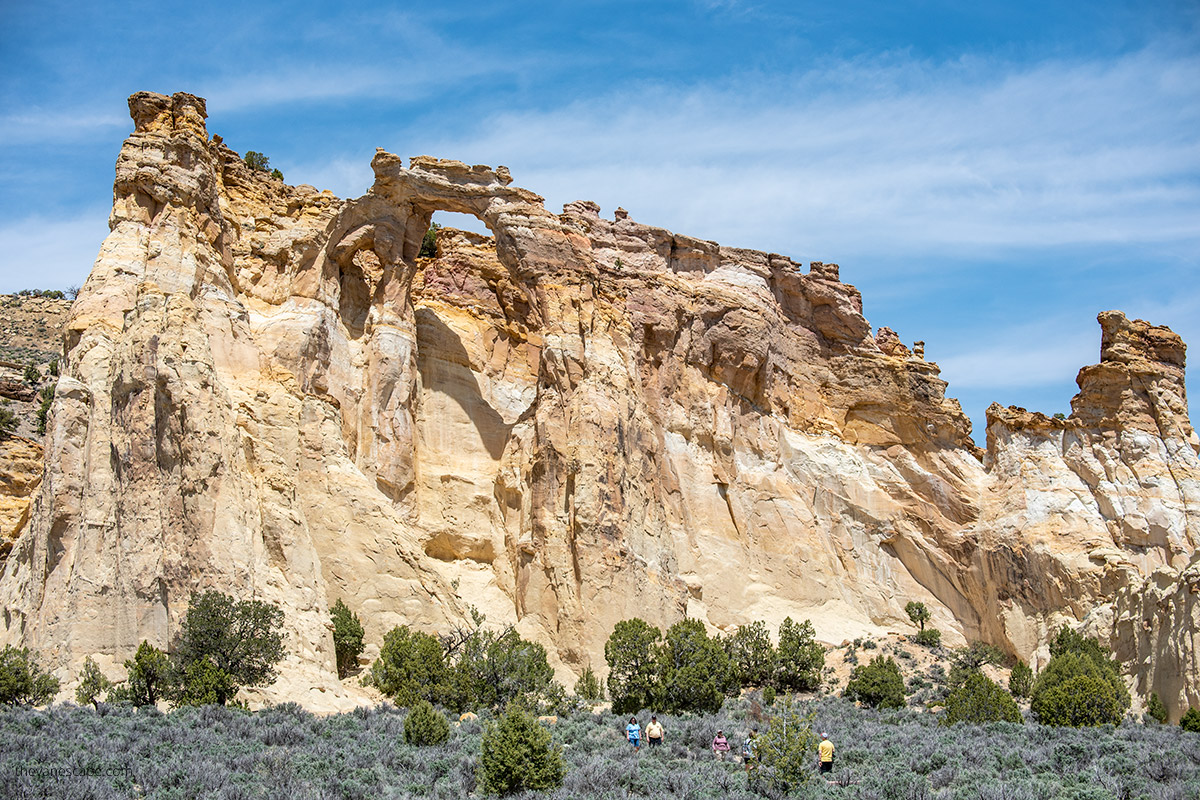
Driving to Grosvenor Arch – Our Experiences
Utah is famous for its stunning arch formations. Most notable are those in Arches National Park and Natural Bridges National Monument. However, the slightly isolated Grosvenor Arch is also remarkable. Due to its height and appearance—it is a double arch—it is one of the most exciting arches in the state.
We included this location in our recent Utah travel plans for that reason. Chris and I were impressed with the location and the arch. Grosvenor Arch holds a special place in the landscape of southern Utah. Check out our tips to get there and explore other attractions in the area. You won’t be bored! Also, all the pictures presented in this article were taken during our trip to this stunning rock formation.
What is the Grosvenor Arch?
Grosvenor Arch is a remarkable double sandstone arch in southern Utah, located within the Grand Staircase-Escalante National Monument. It’s a massive formation standing over 150 feet high and spanning 92 feet across. The arch is named in honor of Gilbert Hovey Grosvenor, the National Geographic Society president.
Geological Formation
Grosvenor Arch’s formation began millions of years ago through the process of erosion and weathering. The arch is carved from sandstone, and its unique double arch structure is a testament to the power of natural forces. Over time, wind, water, and temperature changes sculpted the sandstone into the remarkable shape we see today.
Discovery and Naming
The arch was named after Dr. Gilbert Hovey Grosvenor, one of the presidents of the National Geographic Society. The naming took place during an expedition to the area by the Society in 1947. Gilbert Hovey Grosvenor was the first full-time editor of National Geographic Magazine and played a significant role in promoting geographic education and exploration.
The arch’s naming in Grosvenor’s honor reflects both the National Geographic Society’s importance in exploring and mapping remote areas and Grosvenor’s personal contributions to the field of geography.
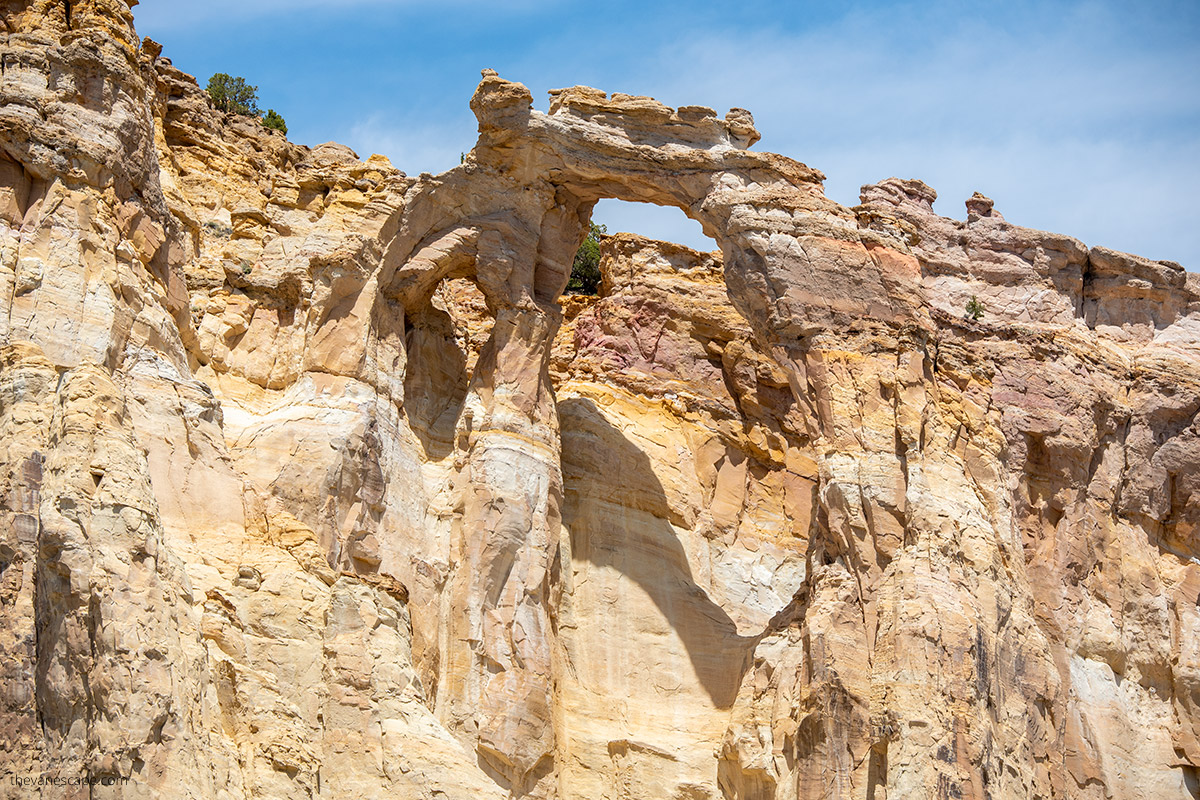
Accessibility and Preservation
Grosvenor Arch is located within the Grand Staircase-Escalante National Monument, designated in 1996 to protect the region’s unique geological and ecological features. The arch itself is relatively accessible, with a dirt road leading to the site and a concrete sidewalk allowing visitors to approach the base of the arch.
The site has been maintained to provide amenities like restrooms and benches, and efforts have been made to make the area handicap accessible. This accessibility has helped make Grosvenor Arch a popular destination for tourists and photographers.
Cultural Significance
The arch’s striking appearance and remote location have made it a symbol of southern Utah’s wild and untouched beauty. It is a reminder of the region’s geological history and the ongoing processes that continue to shape the landscape.
How tall is Grosvenor Arch?
Grosvenor Arch towers 150 feet above the ground and spans 92 feet across, making it an imposing and awe-inspiring sight.
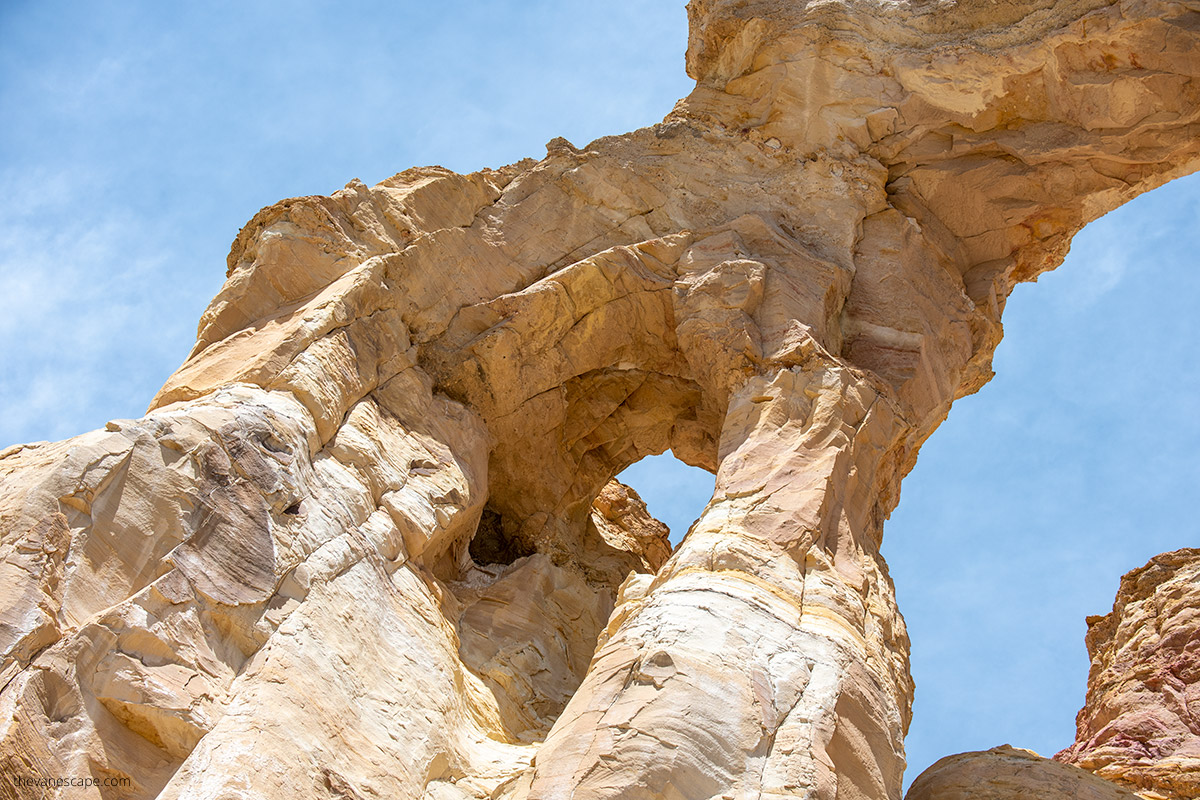
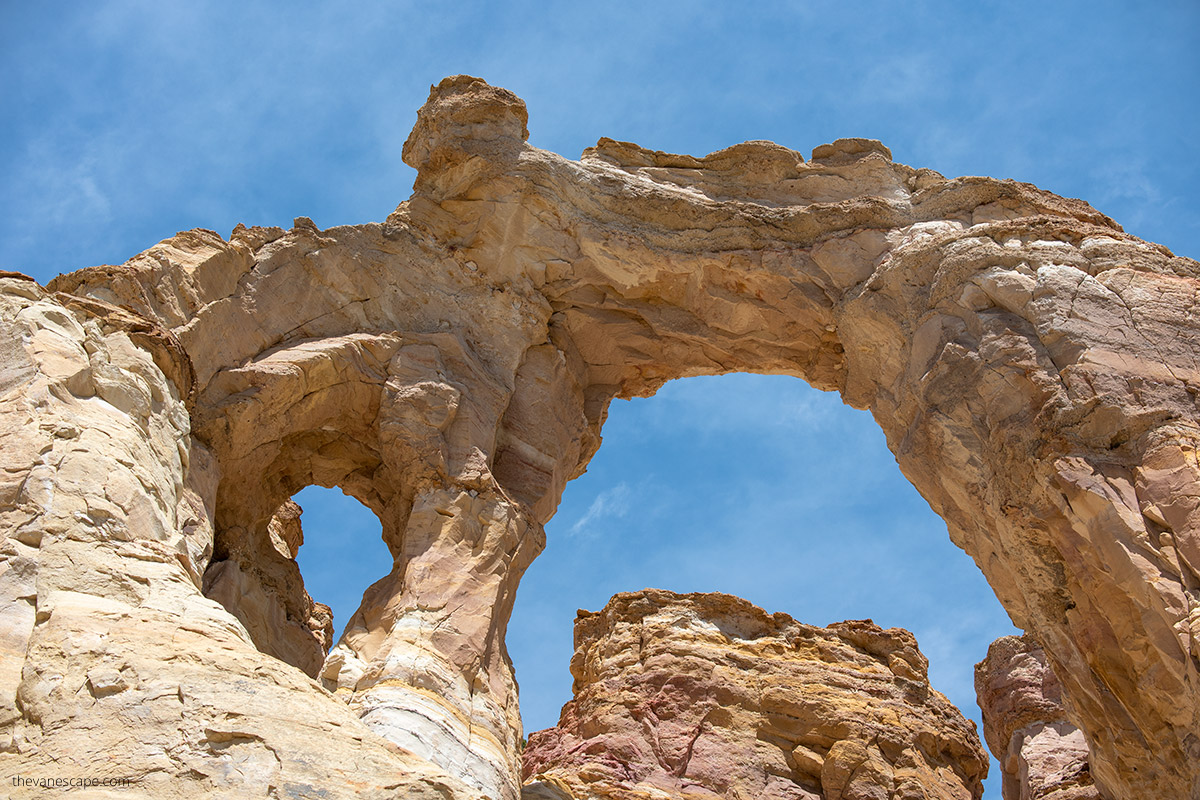
Where is Grosvenor Arch?
Grosvenor Arch is situated in southern Kane County, Utah, in the northwestern part of the Grand Staircase Escalante National Monument. It’s approximately 10 miles southeast of Kodachrome Basin State Park and can be accessed via scenic Cottonwood Canyon Road.
How to get to Grosvenor Arch?
To reach Grosvenor Arch, take state route 12 south of Cannonville for about 9 miles, then continue on Cottonwood Canyon Road, a graded dirt road, for another 10 miles to the parking lot. The road is generally passable for most vehicles, but caution is advised if the road is wet or muddy.
Driving direction from Escalante
The total distance from Escalante to Grosvenor Arch, Utah, is approximately 52 miles, and the drive typically takes around 1.5 hours, depending on road conditions and traffic.
- Start in Escalante: Begin west on UT-12 W/Main St toward N 100 W St.
- In Cannonville, turn left onto Main Street and follow the signs to Kodachrome Rd and Kodachrome Basin State Park.
- Turn onto Cottonwood Canyon Rd/K7000 and continue about 10 miles to the parking lot. It’s a well-marked place.
- Check out The best things to do in Escalante and its area and Where to stay in Escalante.
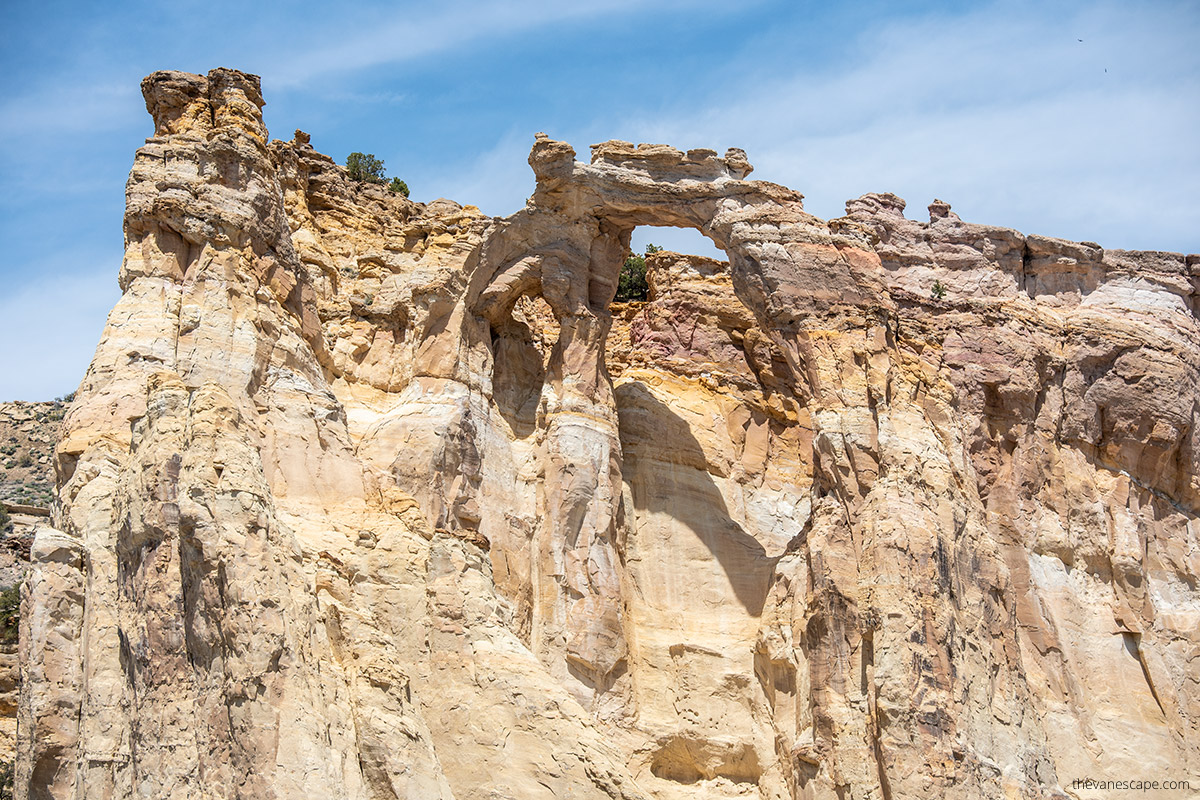
Driving directions from Bryce Canyon National Park
It’s a great idea to visit the Grosvenor Arch while visiting the nearby Bryce Canyon National Park. The total distance from Bryce Canyon National Park to Grosvenor Arch is approximately 35-40 miles, and the drive typically takes around 1 to 1.5 hours, depending on road conditions and traffic.
- Start at Bryce Canyon National Park: Exit the park and head north on UT-63 N toward Bryce Canyon City.
- Head to Cannonville: Turn right onto UT-12 E and continue for approximately 13 miles until you reach Cannonville.
- Turn onto Cottonwood Canyon Road: In Cannonville, turn right onto Cottonwood Canyon Road (also known as Road 400). This is a graded dirt road, so it’s advisable to check the road conditions, especially if it has been raining.
- Continue to Grosvenor Arch: Follow Cottonwood Canyon Road for approximately 10 miles until you reach the parking lot.
- Arrive at Grosvenor Arch: From the parking lot, a short 5-10 minute walk on a concrete sidewalk will lead you to the arch.
Driving direction from Kanab
If you are visiting Kanab, consider taking a day trip to Grosvenor Arch. However, it’s advisable to have a four-wheel-drive vehicle for this adventure. From the arch, you can continue to Kodachrome Basin State Park. You’ll find excellent hiking trails in Kodachrome. After exploring, you have two options for returning to Kanab: retrace your steps on the same dirt road or take the longer but more picturesque US-89 S. Though the scenic route extends the journey to 104 miles and requires at least 2 hours and 20 minutes of driving, the beautiful views make it a worthwhile option.
- Start in Kanab: Head north on US-89 N from the center of Kanab.
- Turn onto Cottonwood Canyon Road: After approximately 43 miles on US-89 N, turn right onto Cottonwood Canyon Road. This road is also known as Road 400, a graded dirt road.
- Continue to Grosvenor Arch: Follow Cottonwood Canyon Road for about 16 miles until you reach the parking lot.
- Arrive at Grosvenor Arch: From the parking lot, a short walk on a concrete sidewalk will lead you to the arch.
Our Tip: From Kanab, you might also consider taking a local tour: Grand Staircase-Escalante Drive & Hike Tour. Thanks to this, you will get to know the most exciting and beautiful places on the route. You can enjoy the views and take photos instead of driving your car on a gravel road.
Is 4WD a must?
Most vehicles can access Grosvenor Arch, but 4WD may be necessary if the road is muddy or wet. We had a Jeep Wrangler with 4WD. The weather was perfect and was dry, so we didn’t use a four-wheel drive. However, if you want to drive to other exciting places in this area, we highly recommend 4WD. Some places in Southern Utah are accessible only with four-wheel drive.
Important Considerations
- Road Conditions: The Cottonwood Canyon Road can become difficult or impassable when wet. Check the road conditions and consider the type of vehicle you’re driving.
- Services: Ensure you have enough fuel and supplies, as this route passes through remote areas.
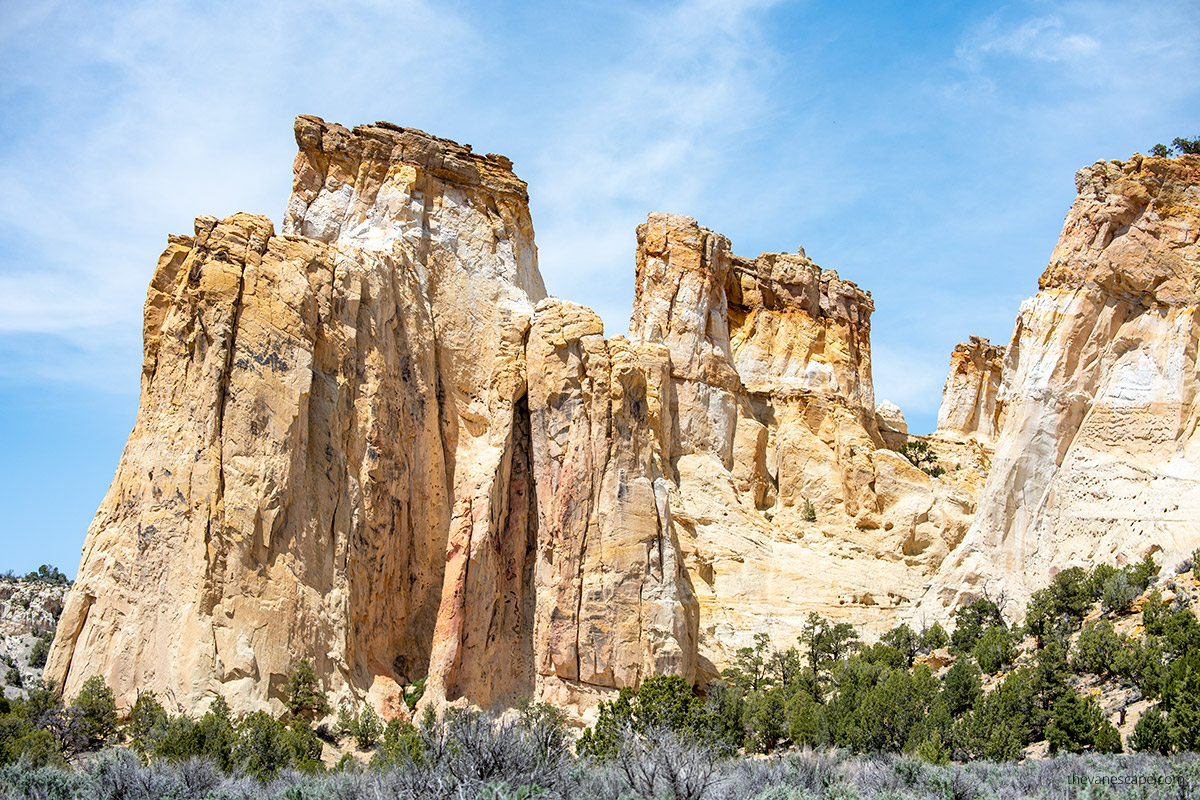
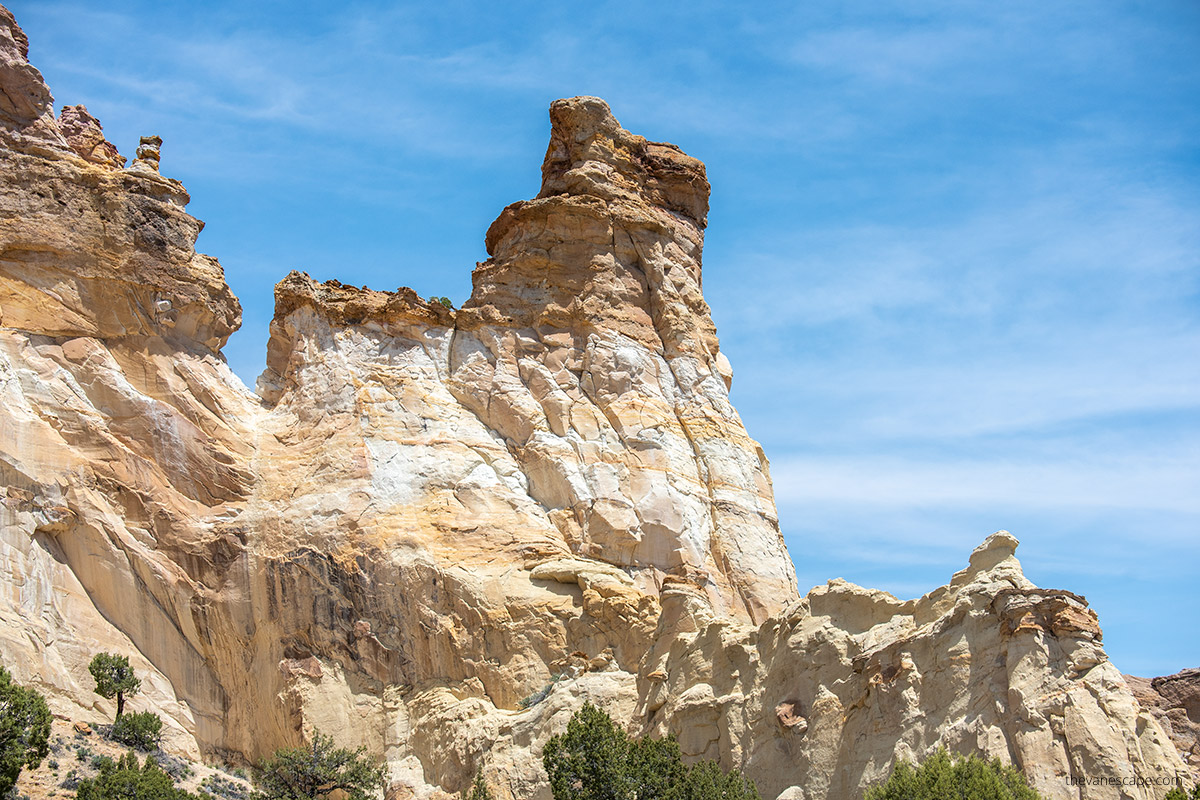
Is driving to Grosvenor Arch worth it?
Yes, driving to Grosvenor Arch is considered a worthwhile experience. The arch’s unique double formation and towering presence make it a must-see attraction. The area is often less crowded, providing a more peaceful experience. Moreover, the arch itself is accessible to most, including those with disabilities.
Our Tip: If you want less crowded places and like rock arches and natural bridges, consider visiting Capitol Reef National Park and taking a Hickman Bridge hike.
How Much Does it Cost to Visit
Visiting Grosvenor Arch is free of charge. There are no entrance or parking fees, making it an affordable destination for travelers.
Do you need a permit to get there?
No permits are required to visit Grosvenor Arch. Visitors are free to explore the area at their leisure.
Driving to Grosvenor Arch, Utah – Final Thoughts
Our driving to Grosvenor Arch was more than just a day trip. It was an exploration of southern Utah’s geological wonder and a celebration of the state’s wild beauty. From the towering presence of the arch to the scenic drives through the rugged landscape, every moment was filled with awe and appreciation. If you find yourself in southern Utah, don’t miss the chance to witness this remarkable double arch. Grosvenor Arch awaits, and it’s a journey well worth taking.
